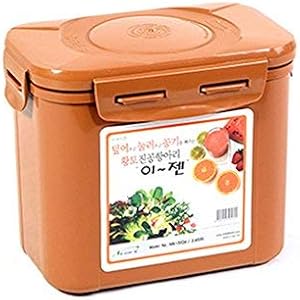What is Fermentation in Bread?
Fermentation is a natural metabolic process that converts sugar to acids, gases, or alcohol using microorganisms such as yeast and bacteria. In the context of bread, fermentation is crucial as it not only helps in the leavening of the dough but also enhances the flavor and texture of the final product. The process begins when yeast is added to the dough, where it consumes the sugars present and produces carbon dioxide and alcohol as byproducts.
The Role of Yeast in Bread Fermentation
Yeast is the primary microorganism responsible for fermentation in bread making. Saccharomyces cerevisiae, commonly known as baker’s yeast, is the most widely used strain. During fermentation, yeast ferments the sugars in the dough, producing carbon dioxide that causes the dough to rise. This leavening action is essential for achieving the light and airy structure characteristic of well-made bread.
Types of Fermentation in Bread Making
There are two main types of fermentation in bread making: primary fermentation and secondary fermentation. Primary fermentation occurs after the dough is mixed and before it is shaped. This stage allows the dough to rise and develop flavor. Secondary fermentation, also known as proofing, happens after shaping the dough and before baking. This final rise further enhances the bread’s texture and volume.
The Importance of Temperature in Fermentation
Temperature plays a significant role in the fermentation process. Yeast is most active at temperatures between 75°F and 85°F (24°C to 29°C). At these temperatures, fermentation occurs at an optimal rate, resulting in a well-risen dough. If the temperature is too low, fermentation slows down, leading to dense bread. Conversely, excessively high temperatures can kill the yeast, halting the fermentation process altogether.
Fermentation Time and Its Impact on Flavor
The duration of fermentation significantly affects the flavor profile of the bread. Longer fermentation times allow for the development of complex flavors due to the production of organic acids and alcohol. This is why artisan breads often undergo longer fermentation periods, resulting in a more robust taste and improved digestibility. Shorter fermentation times may yield bread that is less flavorful and has a more uniform texture.
Get more content like this!
Sign up to receive updates and new terms first hand.
Wild Yeast and Sourdough Fermentation
Sourdough bread utilizes wild yeast and lactic acid bacteria for fermentation, creating a unique flavor and texture. Unlike commercial yeast, wild yeast is naturally present in the environment and flour. The fermentation process in sourdough is slower, allowing for the development of a tangy flavor and chewy crust. This traditional method of fermentation has gained popularity due to its health benefits and distinctive taste.
Fermentation and Gluten Development
During fermentation, gluten proteins in the dough undergo a process called hydration, which allows them to develop strength and elasticity. This is crucial for trapping the carbon dioxide produced by yeast, leading to a well-risen loaf. Proper gluten development during fermentation contributes to the bread’s structure, chewiness, and overall quality. Bakers often use techniques such as stretch and fold to enhance gluten formation during fermentation.
Fermentation and Dough Conditioning
Dough conditioning is a technique used to improve the fermentation process and the final bread quality. Ingredients such as salt, sugar, and fats can influence fermentation by affecting yeast activity and gluten structure. For instance, salt strengthens gluten and controls yeast fermentation, while sugar provides additional food for yeast, enhancing fermentation speed. Understanding these interactions is vital for achieving the desired bread characteristics.
Monitoring Fermentation: Signs of Progress
Bakers must monitor the fermentation process closely to ensure optimal results. Signs of proper fermentation include dough expansion, a slightly domed surface, and a pleasant aroma. Additionally, the dough should feel airy and elastic when gently pressed. Over-fermentation can lead to a collapse of the dough structure, while under-fermentation results in dense bread. Mastering the art of fermentation is key to successful bread making.
Conclusion: The Art and Science of Bread Fermentation
Understanding what fermentation is in bread making is essential for any baker. This intricate process not only influences the bread’s rise and texture but also its flavor and aroma. By mastering fermentation techniques, bakers can create a wide variety of bread types, each with its unique characteristics. Whether using commercial yeast or exploring the world of sourdough, fermentation remains a fundamental aspect of bread making.




